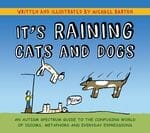YOUR WORDS MATTER TO STUDENTS WITH AUTISM
Extract
Many students with autism have Mind Blindness, meaning they are often literal and don’t know the inferred intent of language. This often leads to difficulty understanding another person’s perspective.
This can mean certain words are often very confusing, for example, students with autism typically struggle with the words STOP and NO. If an adult says STOP what does this mean? Do they mean stop breathing? Stop moving? Stop eating? STOP does not tell a child what they can do – it only tells them what they shouldn’t do. When you have to use STOP make sure you add a little bit more information so the child knows what they should do i.e. STOP working, pencil down, it’s time to listen…..
Another instance where confusion may occur due to this literalness is in the use of the words ‘could’, ‘would’ and ‘can’ as they often sound like a choice rather than a direction. For example when asked, “Could you start your work?” children may just answer yes or no rather than taking action! It is therefore better to simply say Start work to avoid this confusion.
Although these instructions may sound over directed they clearly convey the intended message to the child. It is important children know what your words mean, so they respond appropriately for their own safety and learning.
Focus on telling the child what you want them to do rather than focusing on what they are not to do e.g. if they rushed into the bathroom and started playing with the taps, rather than saying NO say First toilet, then wash hands. The latter is far more supportive and directive for the child.
In the table below I have a few ideas to get you started about thinking about how your words matter and can be replaced so you say what you MEAN.


Jude Welton looks at a hundred of the most common figures of speech in this visual workbook designed as a springboard for family and classroom discussions. Each figure of speech is accompanied by an illustration showing its literal meaning, which will help ASD children recognise and learn to enjoy metaphors and figurative language.
$28.95

An autism spectrum guide to the confusing world of idioms, metaphors and everyday expressions. The quirky drawings will entertain and inspire those on the spectrum, providing memorable reference points for figures of speech, and will help their friends, families, teachers and colleagues to better understand the ASD way of thinking.
$25.95


 Sorry we no longer ship items outside Australia. Please consider the digital versions of Sue’s Books –
Sorry we no longer ship items outside Australia. Please consider the digital versions of Sue’s Books – 